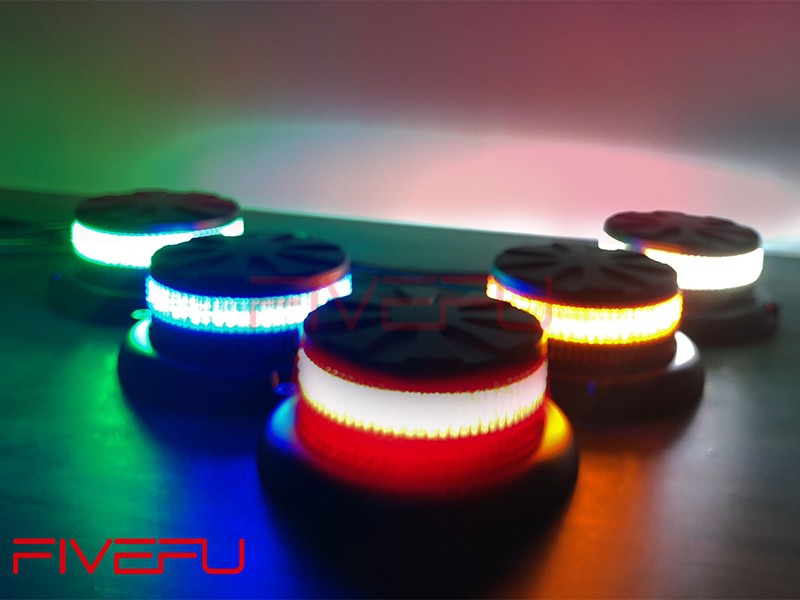Are led dash lights dimmable?
Yes, many LED dash lights are designed to be dimmable. This feature is particularly important for emergency and service vehicles for several reasons:
1. Adjustable Visibility
Day/Night Adaptability: Allows the brightness to be adjusted based on the time of day. Brighter settings can be used during daylight for maximum visibility, while at night, dimmer settings help in reducing glare and maintaining the driver’s night vision.
Adapting to Weather Conditions: In foggy, rainy, or snowy conditions, being able to adjust the brightness of dash lights can help in minimizing reflection and glare, which could impair visibility.
2. Operational Flexibility
Stealth Operations: For law enforcement and security vehicles, the ability to dim dash lights is crucial during surveillance or when approaching a scene discreetly.
Energy Conservation: Dimming lights when full brightness isn’t necessary can help in reducing energy consumption, which is beneficial for vehicles that need to preserve battery life during long operations.
3. User Comfort and Safety
Reducing Eye Strain: Bright lights can cause significant eye strain over extended periods, especially at night. Dimmable LEDs can help in creating a more comfortable environment for the vehicle operator.
Safety: By adjusting the brightness, drivers can ensure that the dash lights are effective in signaling without being dangerously blinding to other road users.
4. Customization and Control
User Preferences: Allows the operators to customize the brightness according to their personal preference or operational requirements.
Integration with Vehicle Systems: Some advanced LED dash light systems can automatically adjust their brightness based on ambient light conditions, further enhancing usability and safety.
How to install led dash lights?
Installing LED dash lights in a vehicle involves several steps to ensure the lights are mounted securely, wired correctly, and fully operational. This process can vary based on the specific model of the LED dash light and the type of vehicle, but here’s a general guide that outlines a professional approach:
Step 1: Planning and Preparation
Select the Installation Location: Choose a spot on the dashboard or windshield that offers optimal visibility without obstructing the driver’s view or vehicle operation.
Gather Necessary Tools and Materials: Typically, you’ll need the LED dash light kit, which includes the light unit and mounting hardware, as well as basic tools like screwdrivers, wire strippers, and possibly electrical tape or cable ties.
Step 2: Mounting the LED Dash Light
Attach the Mounting Bracket: If your LED dash light comes with a bracket or suction cups for mounting, attach these to the light according to the manufacturer’s instructions.
Position the Light: Place the light in the chosen location, ensuring it’s secure and oriented for the best visibility. Use suction cups for temporary mounting or brackets for a more permanent setup.
Step 3: Wiring the Light
Power Source Connection: Decide if you will use a direct wiring to the vehicle’s electrical system or a plug-in adapter for the cigarette lighter socket. Direct wiring is more discreet and permanent but requires careful handling to avoid electrical issues.
Running the Wires: Plan the route for the wires to reach the power source without interfering with vehicle controls or safety features. Hide wires under the dashboard trim or carpeting for a clean installation.
Making Electrical Connections: If directly wiring, connect the positive wire to a power source that is activated with the ignition switch to ensure the light is operational only when the vehicle is on. Ground the negative wire to a metal part of the vehicle’s frame. Use crimp connectors or solder for secure connections, and insulate them with electrical tape or heat shrink tubing.
Step 4: Testing the Installation
Test the Light Functionality: Before finalizing the installation, test the light to ensure it works correctly. Check all modes and functions to verify everything is operational.
Adjustments: Make any necessary adjustments to the light’s position or wiring based on the test.
Step 5: Finalizing the Installation
Secure the Wiring: Use cable ties to neatly secure any loose wires along the chosen route, ensuring they do not interfere with vehicle operations or create hazards.
Clean Up: Reattach any trim or panels removed during installation, and ensure the installation site is clean and tidy.
How bright of led for dash lighting?
The brightness of LED lights for dash lighting in vehicles is an important consideration for both visibility and safety. LED brightness is typically measured in lumens, and for dash lighting, the required brightness can vary depending on the application and personal preference. However, there are some general guidelines you can follow:
Ideal Lumens Range
For Indicator Lights: Small LED indicator lights on the dash, such as those for the check engine light, airbag status, or turn signals, are usually quite bright to ensure visibility in daylight. These can range from 5 to 20 lumens per indicator, depending on the color and purpose.
For General Illumination: For ambient or general dash illumination, including backlighting of gauges, dials, and switches, LEDs don’t need to be as intense as external vehicle lights but should be bright enough to be clearly visible without causing glare. A range of 20 to 100 lumens is typical for these applications, with the ability to adjust brightness being a highly desirable feature for night driving.
Considerations for Brightness
Glare and Night Vision: Excessively bright LEDs can cause glare and negatively impact the driver’s night vision. It’s crucial for LED dash lights to be adjustable, allowing the driver to set a comfortable brightness level that maintains visibility without causing strain or glare.
Purpose of the Light: The specific function of each LED light on the dash will dictate its ideal brightness. Warning indicators need to be bright enough to catch the driver’s attention immediately, while ambient lighting should be softer and adjustable.
Adjustability: Many modern vehicles and aftermarket LED kits offer dimmable dash lights, allowing for brightness adjustment according to personal preference and changing ambient light conditions.
Technical Specifications
Wattage and Efficiency: LED efficiency is also a factor, as LEDs with higher lumens per watt are more energy-efficient. This is less of a concern for small indicator lights but can be relevant for larger installations of ambient lighting.
Color Temperature: While not directly related to brightness, the color temperature of LEDs affects the perceived illumination quality. For dashboards, a color temperature ranging from 3,000K (warm white) to 6,000K (cool white) is common, with warmer colors often used for a more traditional look and cooler temperatures for a modern, high-contrast appearance.
Conclusion
Selecting the right brightness for LED dash lighting involves balancing visibility, safety, and aesthetics. For businesses like FIVEFU Technology, focusing on offering a range of LED lighting solutions that cater to these varied needs—while ensuring compliance with automotive standards like SAE and ECE—is essential for meeting the diverse requirements of the automotive market. Always consult the vehicle’s manufacturer guidelines and consider the driver’s preferences and safety when choosing LED dash lights.





